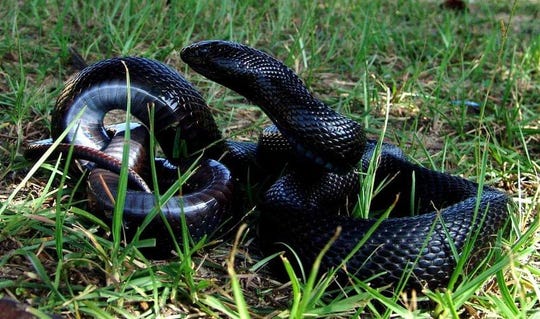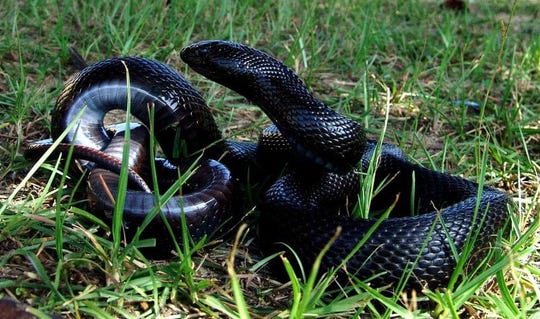The black pine snake is a subspecies of pine snake that isn't seen too often in the wild.
The U.S. Fish and Wildlife Service announced February 25 that more than 325,000 acres of critical habitat in the states of Mississippi and Alabama have been set aside to protect the black pine snake (Pituophis melanoleucus lodingi), a species that is not seen very often in the wild. The designation requires that any federally funded or permitted projects must pass muster with the USFWS in order to ensure that such activities don’t interfere with the reptile or the habitat in which the reptile is known to frequent.

Jim Lee/USFWS/TNC
The black pine snake is a subspecies of pine snake that isn't seen too often in the wild.
"This will help give these elegant snakes the space and safety they need to survive,” Elise Bennett, an attorney for the Center for Biological Diversity said in a statement released to the media. “Black pine snakes require both forest habitat and the active reintroduction of fire. Protecting and restoring longleaf pine forests is an important step toward recovering the pine snake and many other important species in the South.”
Black Pine Snakes Listed As Threatened Under Endangered Species Act
In total, eight habitats critical to the species in Forrest, George, Greene, Harrison, Jones, Marion, Perry, Stone and Wayne counties in Mississippi and in Clarke County, Alabama are protected. The USFWS said that federal lands comprise about 68 percent of the protected area, with the majority of the land located within the DeSoto National Forest.
In 2015, more than 330,000 acres of critical habitat for the reptile was proposed by the USFWS for protections. The black pine snake’s habitat includes upland, longleaf pine forests, in sandy soils and grassy ground cover. The snake is about 4 to 7 feet in length and feed on rodents, including mice, rats, squirrels and rabbits. It was listed as threatened under the Endangered Species Act in 2015.



